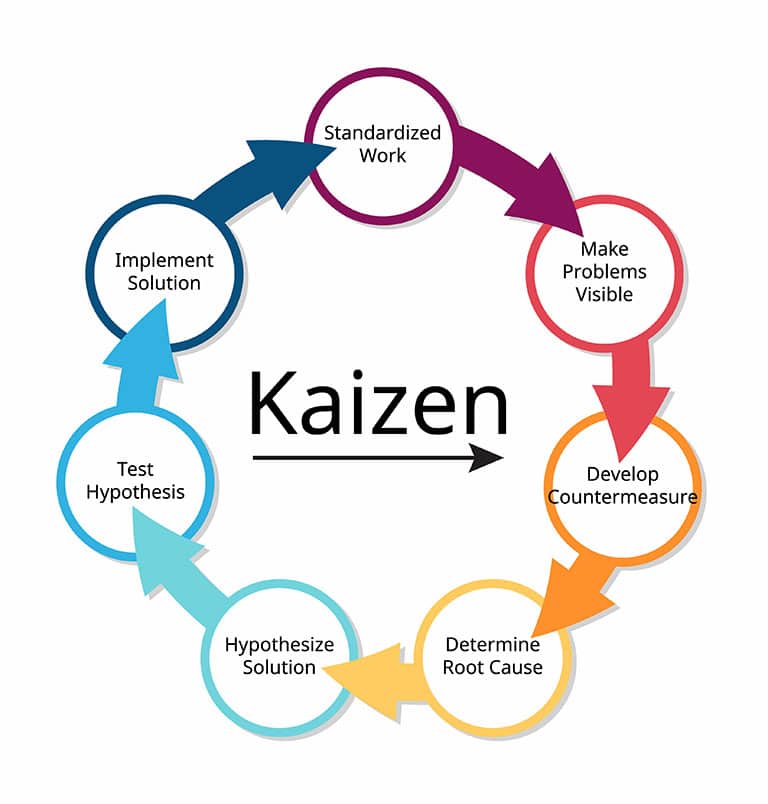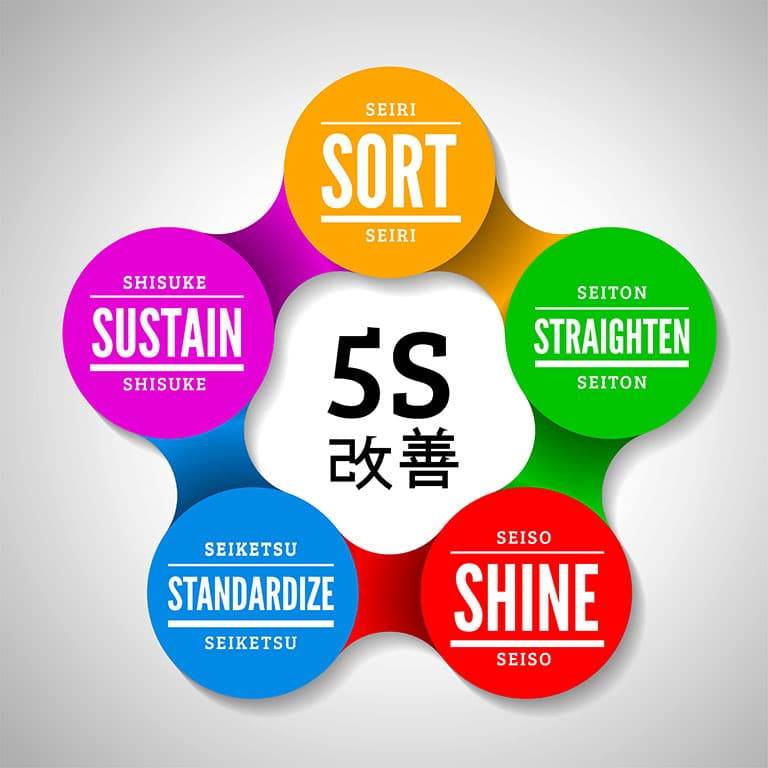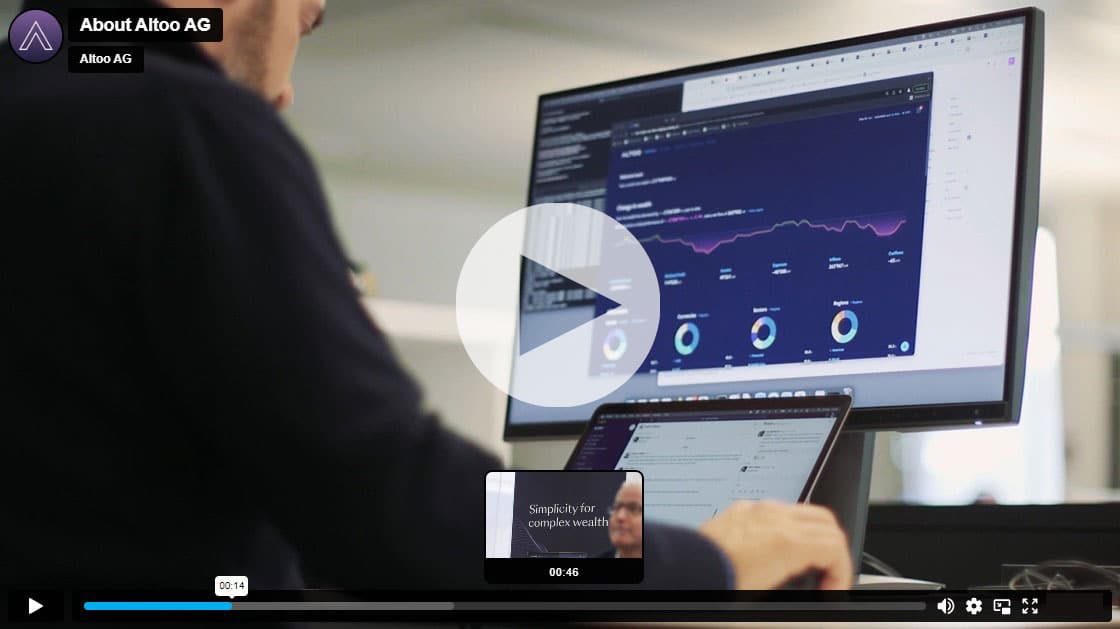What is Kaizen?
The word Kaizen, consists of two parts: Kai, which means “change” or “transformation”, and Zen, which means “for the better”. So it is “improvement”.
Kaizen is a Japanese philosophy of life and work that emphasises the constant and never-ending pursuit of improvement. It is a methodical concept that you can also apply to your company. In Europe, the concept of the “continuous improvement process” (CIP) has become established as the Kaizen principle. The idea is based on accepting, examining, and changing the current state.
Kaizen is also a Japanese principle that is both a philosophy of life and a philosophy of the workplace. It mainly involves processes to improve workflows. To put it simply, this way, you can be successful in the long term without spending a lot of resources.
Implementing Kaizen in the company
The principle of kaizen is based on the idea that any system, once established, is doomed to fail unless it is continuously renewed or improved. Every day without progress in the company is lost. Therefore, kaizen is a philosophy of constant change and flexibility to respond to environmental changes.
Your Wealth, Our Priority: Altoo's Consolidation Power, Secure Document Management, and Seamless Stakeholder Sharing for High Net Worth Individuals. Preview Platform.
The Kaizen umbrella, which includes all areas that the Kaizen principle influences favourably, is another name for the management concept of Kaizen. For example, management concepts such as TQC (total quality control), automation, work discipline, the just-in-time principle, and many others can occur under this umbrella.

Basic actions during the introduction
The best way to implement Kaizen is in a workshop. The easiest way to do this is to have a facilitator lead the workshop and organise the discussions. During the workshop, the participants examine the introduced work processes under the guidance of a specially trained moderator and find ways to improve their weak points. Normally, the participants take over the implementation of the solution proposals developed directly after the workshop. If they are successful, they can also be adopted by other sectors. In this context, there are a total of three essential actions that should be introduced as the basis for Kaizen.
01 Standardisation in all areas, is the first aspect that should be considered when introducing Kaizen. The current state is analysed and declared to be a standard that is to be improved. An actual-target comparison, so to speak.
02 Analysis of the situation through the Japanese five S’s, in German there are no 5 S’s, but these can be translated as follows: “Sorting out, tidying up, keeping clean, making arrangement a rule, and self-discipline”.

03 The elimination of waste is another point that is very important for the implementation of this concept. Waste, in this sense, includes all types of waste, that is, from resources to costs to time. Resource management is the keyword here.
Challenges that can arise in the company
There is always a risk that Kaizen and the continuous improvement process will fall asleep. One possible cause could be that employees’ ideas are not taken into account or that decisions to implement them are very lengthy. Employees might become demoralised by this and stop participating. However, it can be observed that in these situations, management may not fully prioritise the implementation of kaizen, which could potentially hinder the system’s effectiveness in achieving success.
If staff have concerns about job security or potential repercussions, it is possible that these factors contribute to their hesitation towards embracing the concept. Additional reasons that have been mentioned include the potential lack of availability for workshops, instances where issues may not receive adequate attention, or situations where employees may not actively contribute suggestions. In some cases, this may also be due to managers’ lack of patience. t is possible that they may not fully appreciate the impact that even minor improvements can have.









